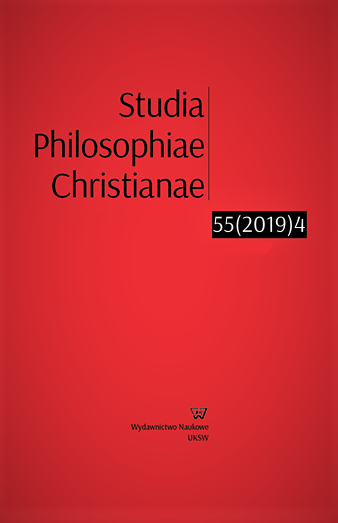Pojęcie reprezentacji mentalnych a problem intencjonalności w ujęciu teleosemantyki
The concept of mental representations and the problem of intentionality according to teleosemantics
Author(s): Janina BuczkowskaSubject(s): Philosophy of Mind, Cognitive Psychology, Neuropsychology
Published by: Wydawnictwo Naukowe Uniwersytetu Kardynała Stefana Wyszyńskiego w Warszawie
Keywords: mental representations; intentionality; teleosemantics; mental content; function; relation;
Summary/Abstract: This paper deals with the issue of explaining cognition in representational theories of mind and teleosemantics in particular, which is the most advanced representationalist account of mental content. The criticism of representational theories from the standpoint of embodied cognition means that the assumptions and theses of the former should be analyzed in terms of the adequacy and success of this approach The main assumption of the representational approach is the thesis that cognitive processes such as perception, conceptual thinking, knowledge, etc. rely on the creation and manipulation of mental representations. The material components of mental representations are neuronal states of the brain (e.g., neuronal stimulation patterns), which are carriers of cognitive content. The main problem with this approach is to explain the attribution of content to brain states that act as representations. Teleosemantics combines the explanation of content attribution with the intentionality of mental states and the thesis about the representational character of cognition. As a starting point, the relationships that occur between the general concept of representation and intentionality are discussed. The general structure of representation meets the conditions of intentionality both in the sense of aboutness and in the sense of referring to an intentional object. The problems to address here concern the formation of representational relations and the attribution of content to states of the brain. Next, the paper examines the solution to these problems proposed by R. Millikan in her theory of teleosemantics. She sees the source of intentionality in the biological functions of acquiring information necessary for the survival of an agent. These functions are fulfilled by relations constituting mental representations. The semantics of mental representations is given by the purpose of biological functions, whereas the truth conditions are correlated with properties of the environment. The final part of the paper is devoted to discussing the limitations of this approach and presenting a criticism from the anti-representationalist position. In turn, this will lead us to the conclusion that teleosemantics, by developing a relational understanding of representation, introduces an important element to the explanation of cognition. It combines the concept of intentionality with the representation of the world in the mind. However, it does not yet give a full an answer to the question of content attribution, nor should it be treated as the only and definitive way to solve the problem of content. Rather, teleosemantics should be regarded as one of the available proposals explaining the intentionality of mental content.
Journal: Studia Philosophiae Christianae
- Issue Year: 55/2019
- Issue No: 4
- Page Range: 5-33
- Page Count: 29
- Language: Polish

